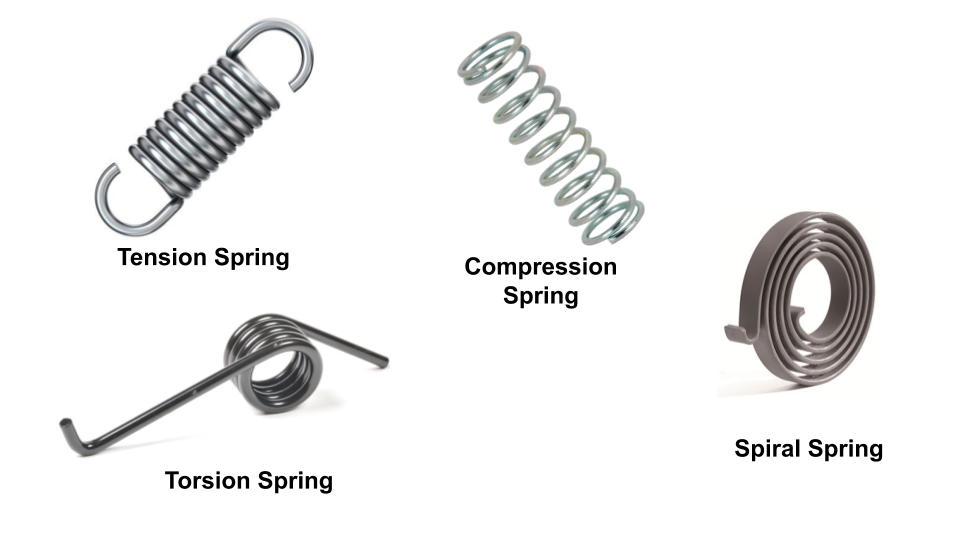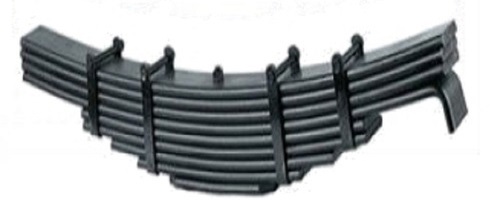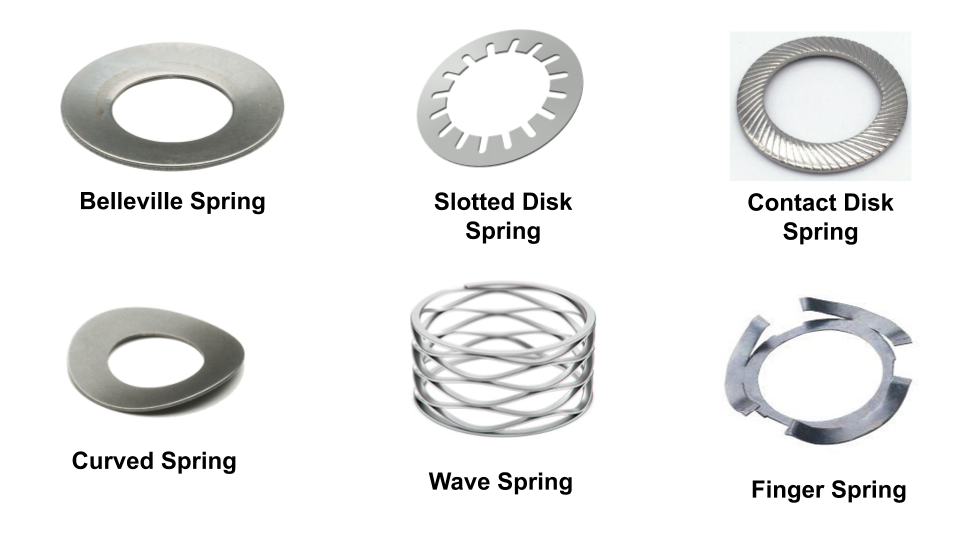What are Springs?
Springs are mechanical components that store mechanical energy and release it when required. They are capable of withstanding large elastic deformation.
Springs change their shape when force is applied and regains their original position when we remove it.
We use many products in our day-to-day life that use springs to achieve the required function. For example, springs are used in analog watches, bicycles, cars, and toys to store mechanical energy and release it. This article covers various types of springs and their applications.
We suggest you also read this article on the predictive maintenance of machines.
Types of Springs and Their Applications
- Helical Springs
- Tension Coil Spring
- Compression Spring
- Torsion Spring
- Spiral Spring
- Leaf Spring
- Disc Spring
- Belleville
- Slotted Disc
- Contact Disc
- Curved Spring
- Wave Spring
- Finger Washer
Helical or Coil Springs
Helical springs are also known as coil springs. They are made of wire coiled in the form of a helix. The cross-section area of the coil spring wire can be round, square, or rectangle.
Type of Helical Springs and their applications
The Following types of helical springs are available according to the line of action of applied force and their application. DIN 2095:1973 standard is applicable to helical springs.
- Tension Spring
- Compression type
- Coil Spring
- Spiral Spring
- Torsion Springs

Tension Coil Springs
Tension coil types of springs operate in tension loads. In the tension springs, spring coils are spaced at a small distance. Helical tension springs have the following applications.
- Garage Door Mechanism
- Weighing Machine.
- Spring Loaded jaw Pliers etc.
Compression Springs
In compression helical springs, helical coils are spaced at a relatively large distance. When a compression force is applied, their length reduces. They operate in compression load. Compression helical springs have the following applications.
- Shock absorber
- Suspension
- Retractable Pen etc.
Torsion Spring
Torsion types of springs store twisting force. They have applications where rotational motion less than 360º is required. Torsion type helical springs have applications in following products:
- Door Hinge
- Mouse Trap
- Safety Pin
Spiral Springs
Spiral springs are the type of flat springs consisting of flat or round wire in helix form. They release a constant amount of force. Spiral springs have the following applications.
- Toys
- Mechanical Watch
- Seat Recliner
Leaf Springs
Leaf spring consists of several flat plates (also known as leaves) of different lengths. These plates are sandwiched one on another using clamps and bolts. They are also known as laminated / carriage or semi-elliptical springs.

Leaf Spring Material
Plain carbon steel (SAE 1095) having 0.90 to 1.0% carbon is used to manufacture leaf springs. After forming, spring leafs are heat-treated to improve strength, deflection, and fatigue properties.
Types of Leaf Springs
Here are the four types of leaf springs:
- Semi-Elliptical Leaf Spring
- Quarter-Elliptical Leaf Spring
- Full-Elliptical Leaf Spring
- Transverse Leaf Spring
Applications of Leaf Springs
- Railway Carriage suspension system
- Heavy automobiles such as truck bus suspension systems.
- Provide Support to the vehicle
- Locate the axle and control vehicle height.
Disc Spring
A disk spring is a round-shaped conical disk that deforms at a relatively shorter distance when we apply the compression force at the disk axis.
They have applications where a high load is acting within limited available space. Disk springs can be stacked on one another in parallel or series to achieve the required spring rate. Click this link to know the various types of spring washers.
Applications of Disk Springs
Disk Springs has the following applications.
- Fail-Safe Spring Actuators
- Clutch Plate
- Vibration Isolation
- High-pressure valve.
Types of Disc Springs

The following types of disk springs are widely available in the market. But out of these Belleville springs are very popular in the industry.
- Belleville Spring / Washers
- Slotted Disc Springs
- Contact Disc Spring
- Curved Spring
- Wave Spring
- Finger Spring washer
To sum up, Mechanical Springs store mechanical energy and release it when required. Various spring types are available according to the type and direction of load applied. You can select a spring according to your application.
We will keep updating this article on various types of springs. Add your suggestions, comments, or questions on types of springs and their applications. We suggest you also read this article on the free body diagram.

Add a Comment